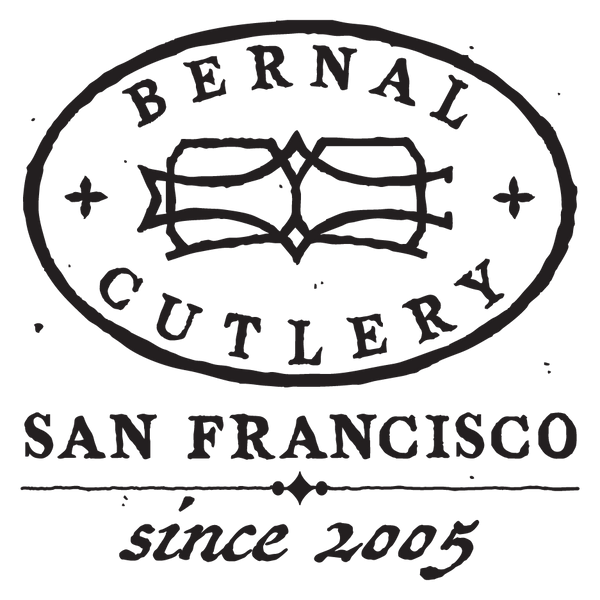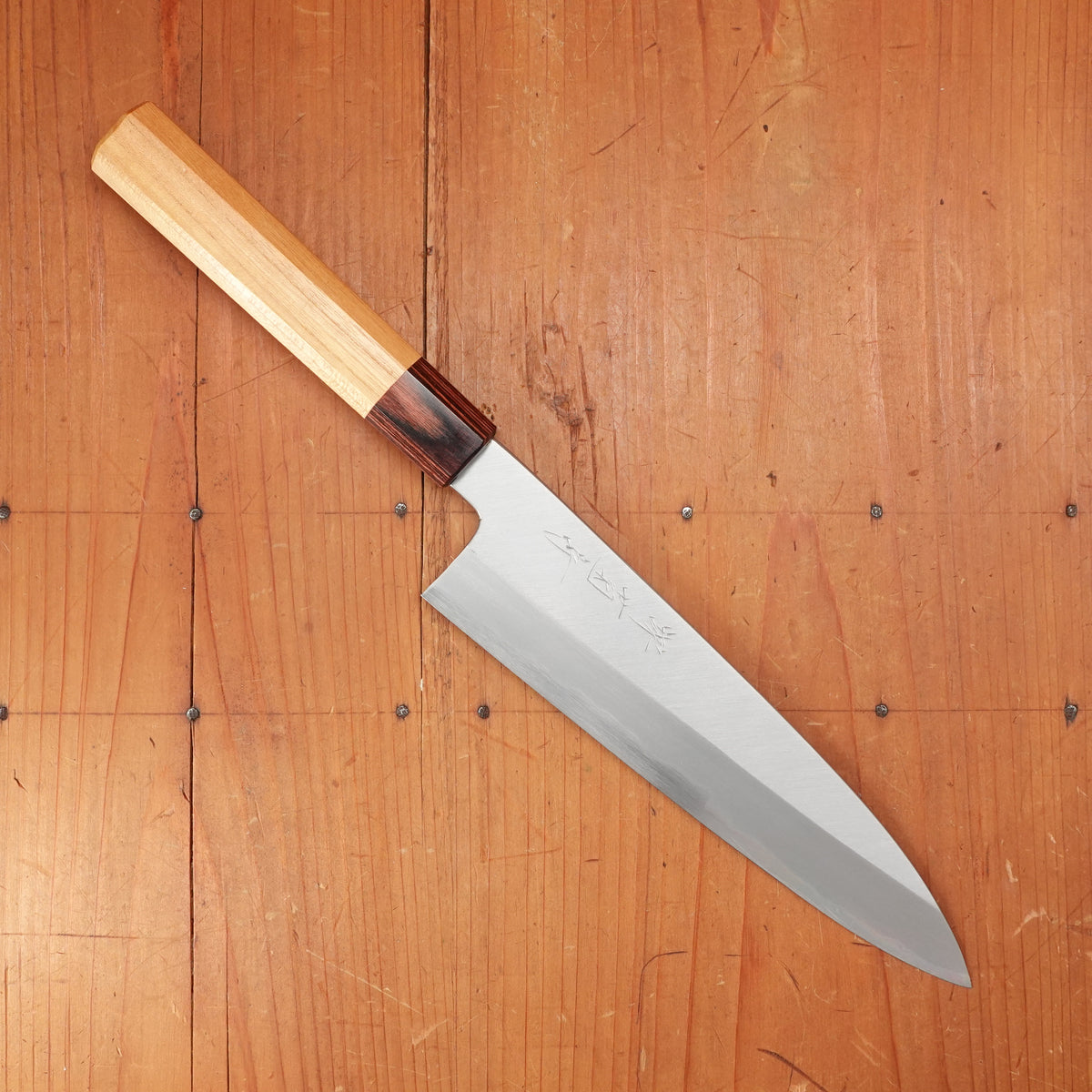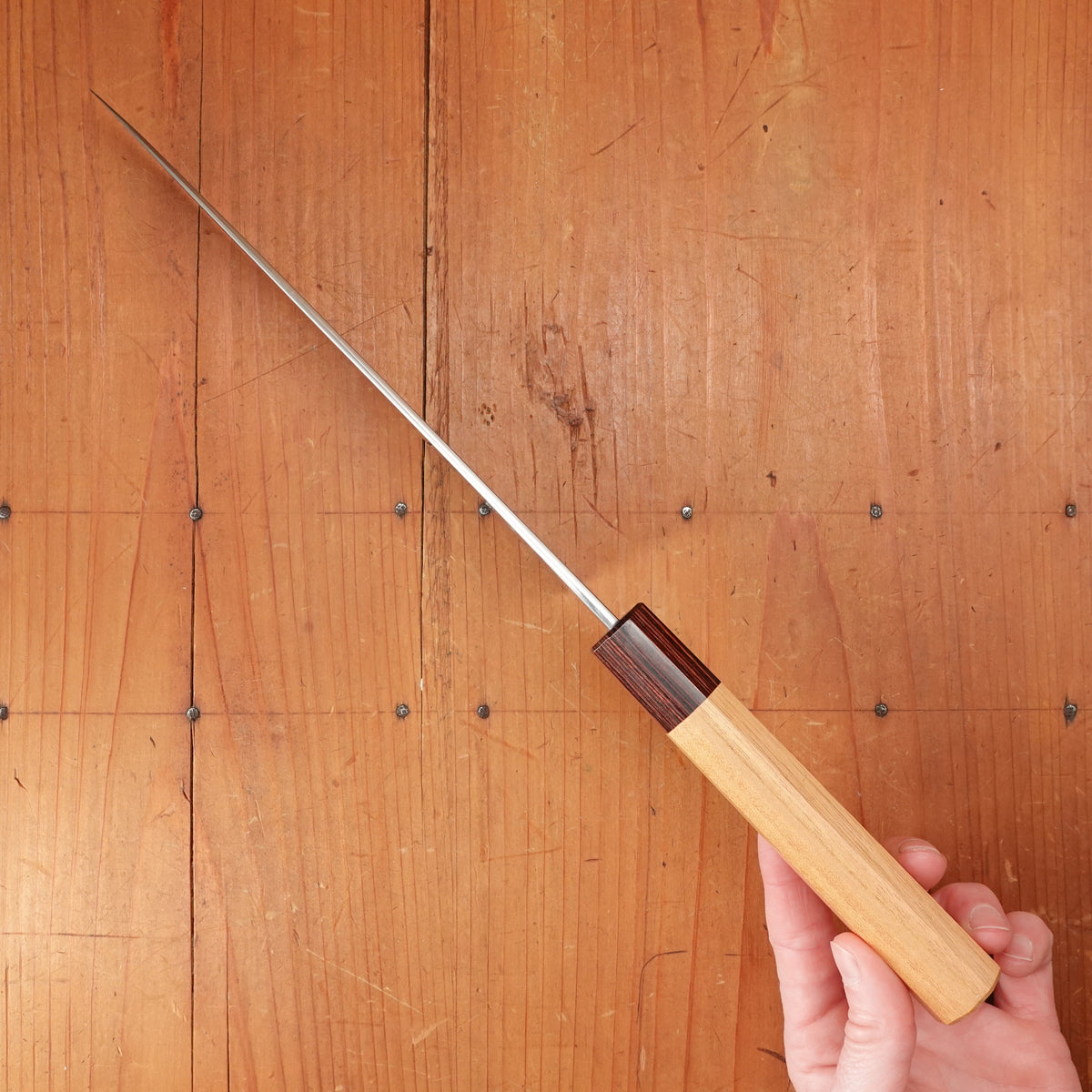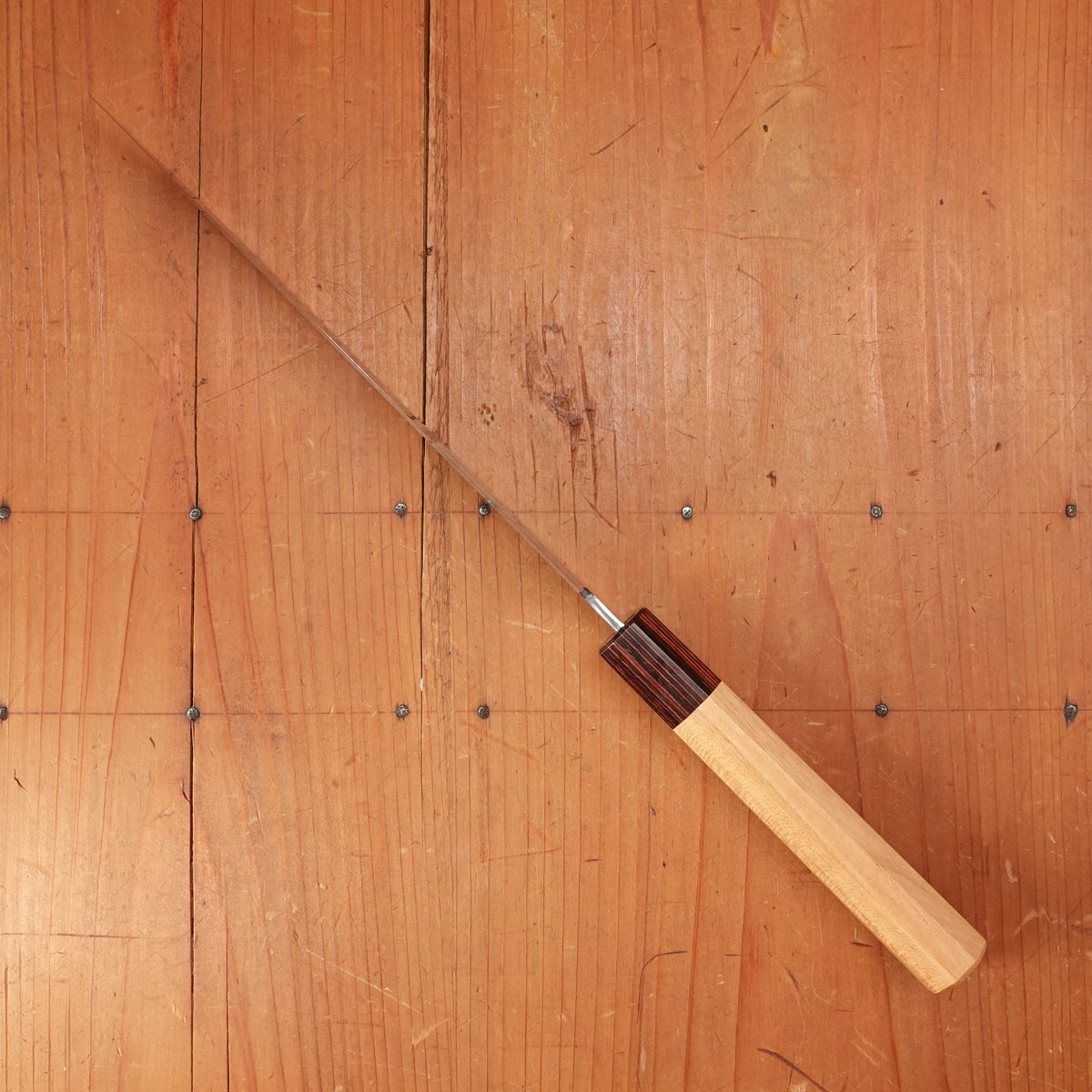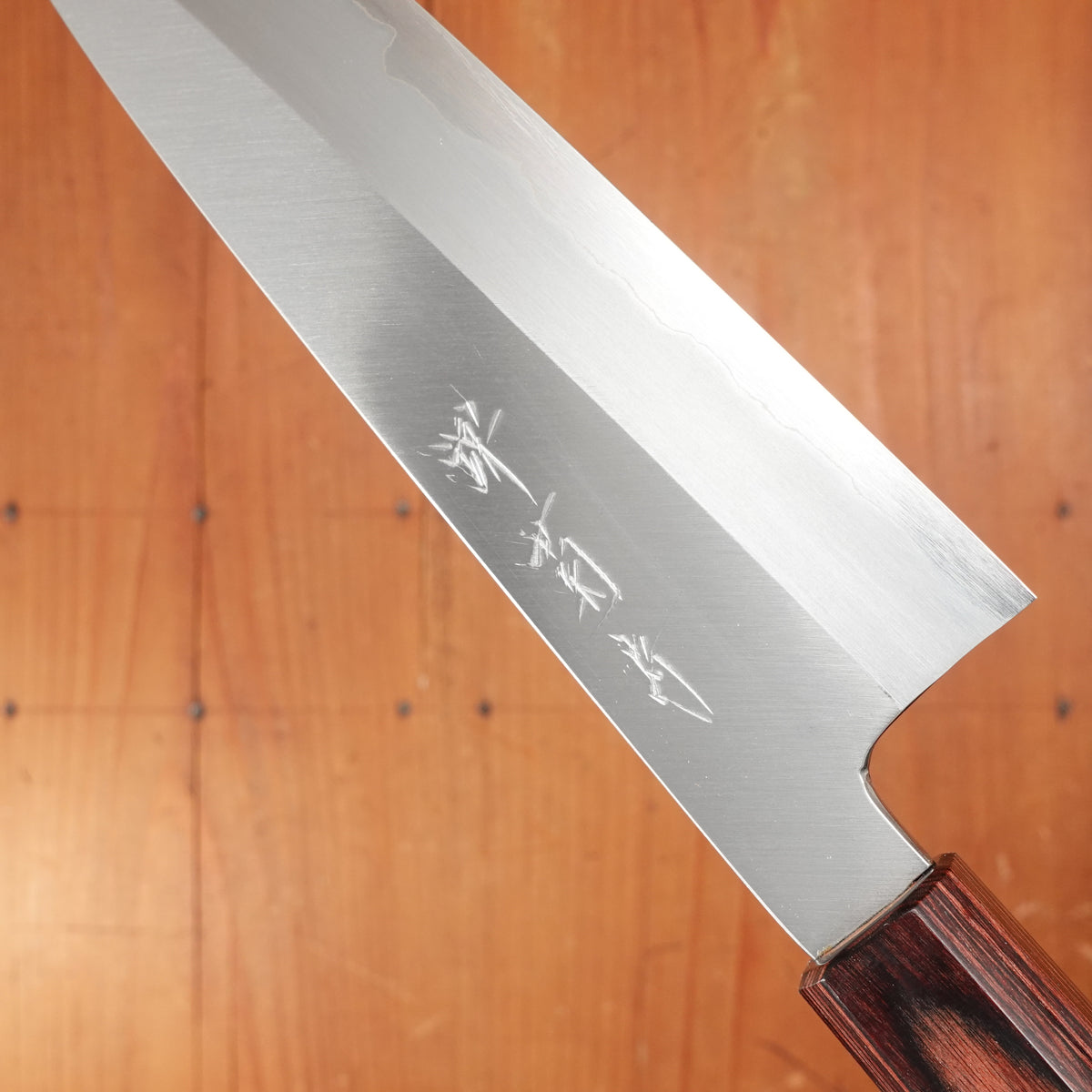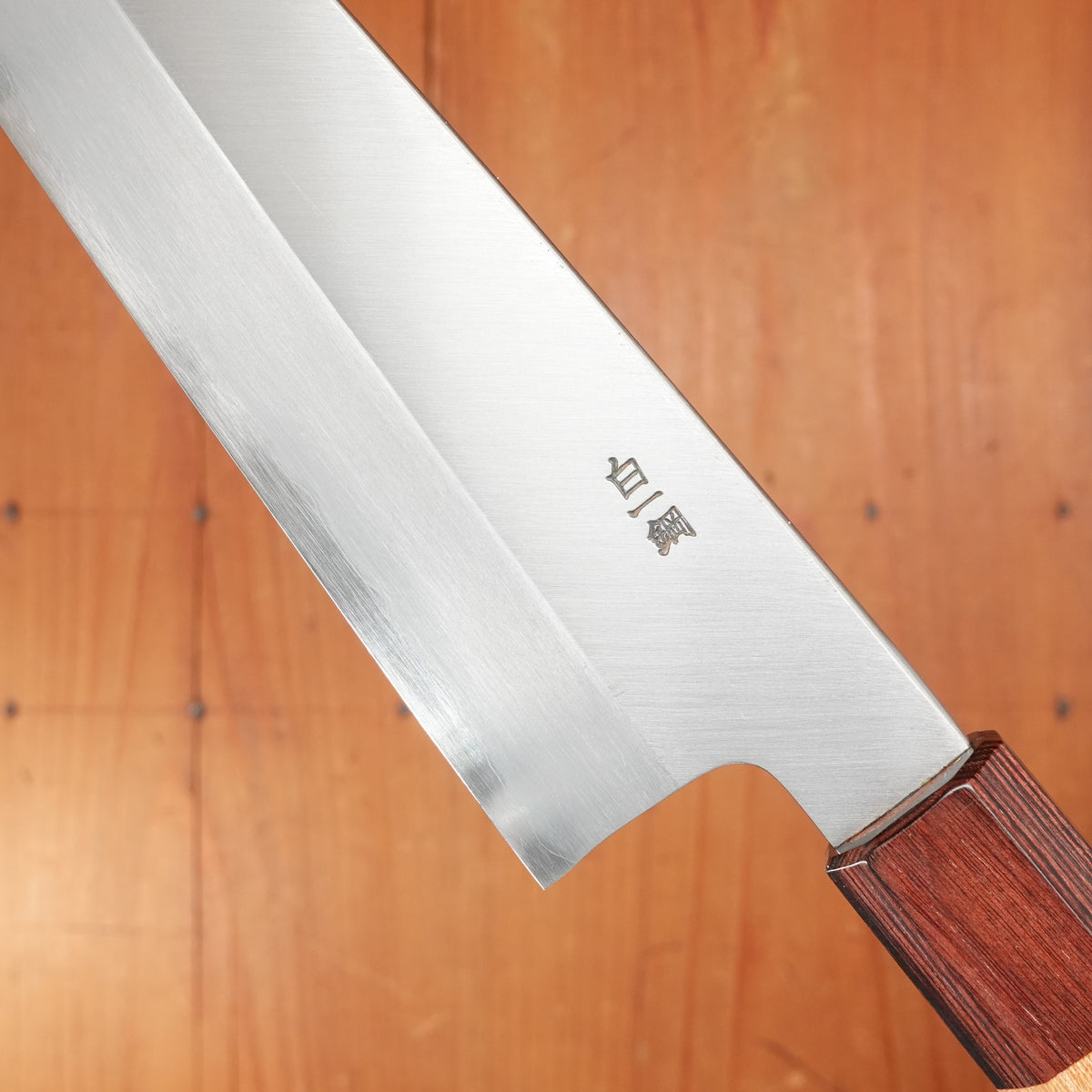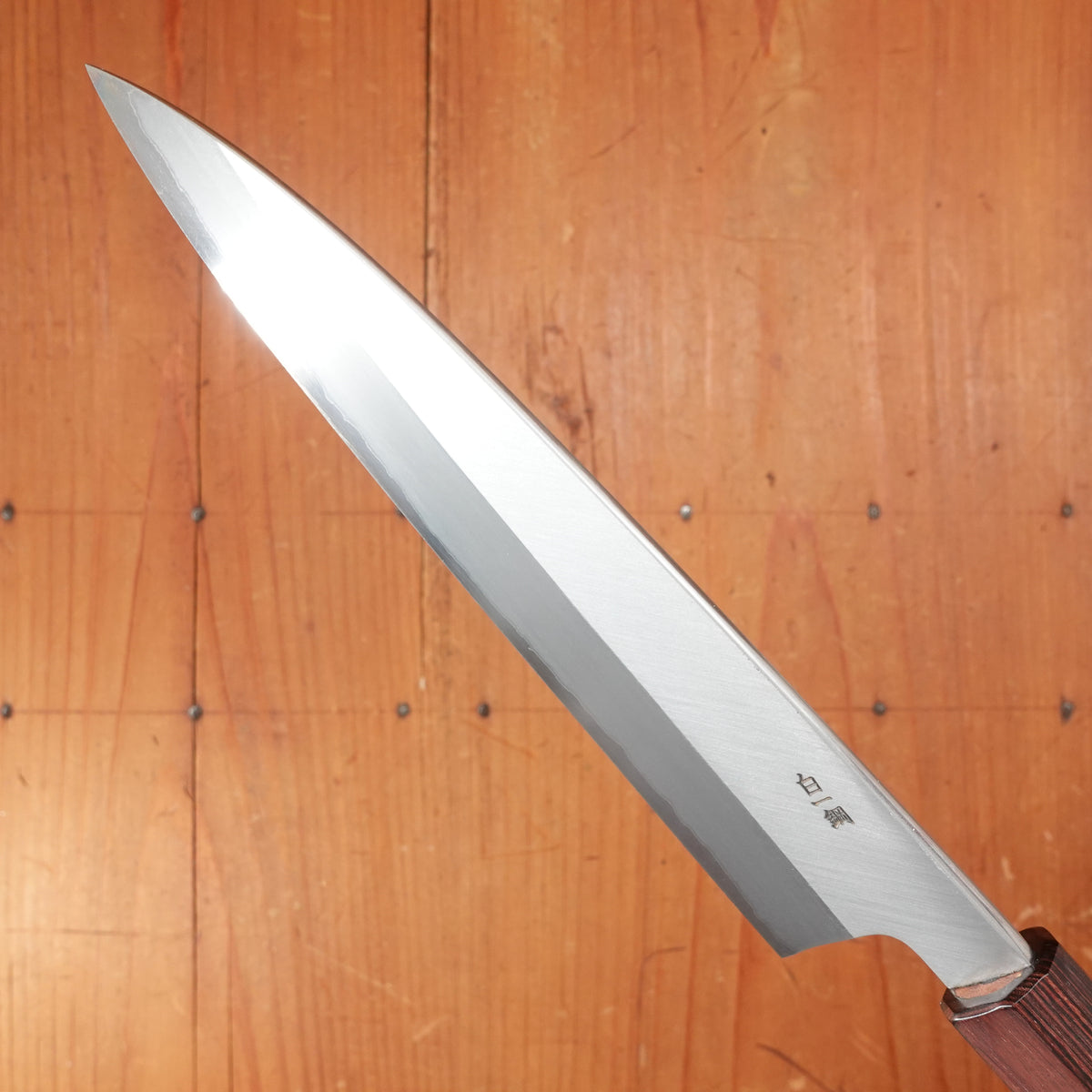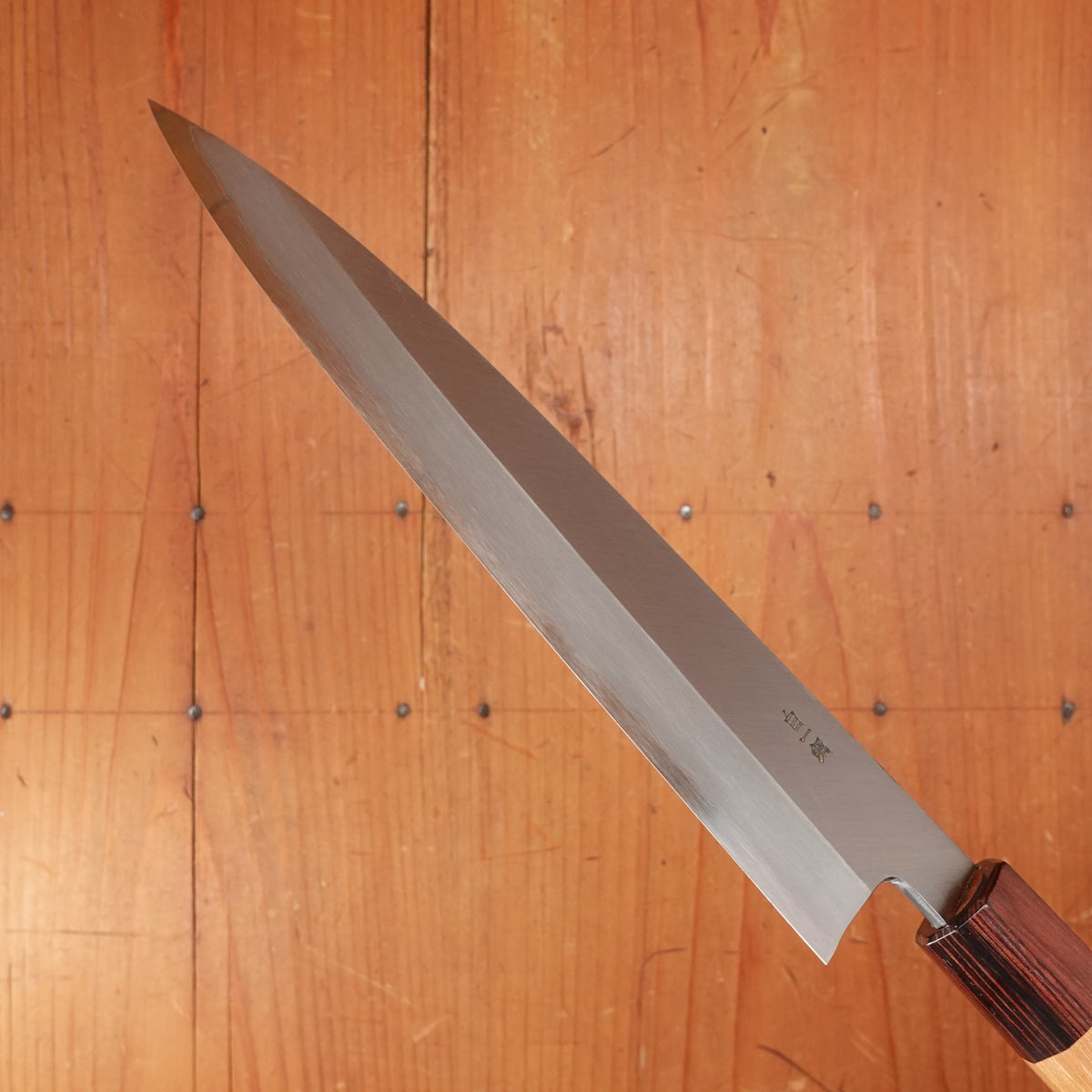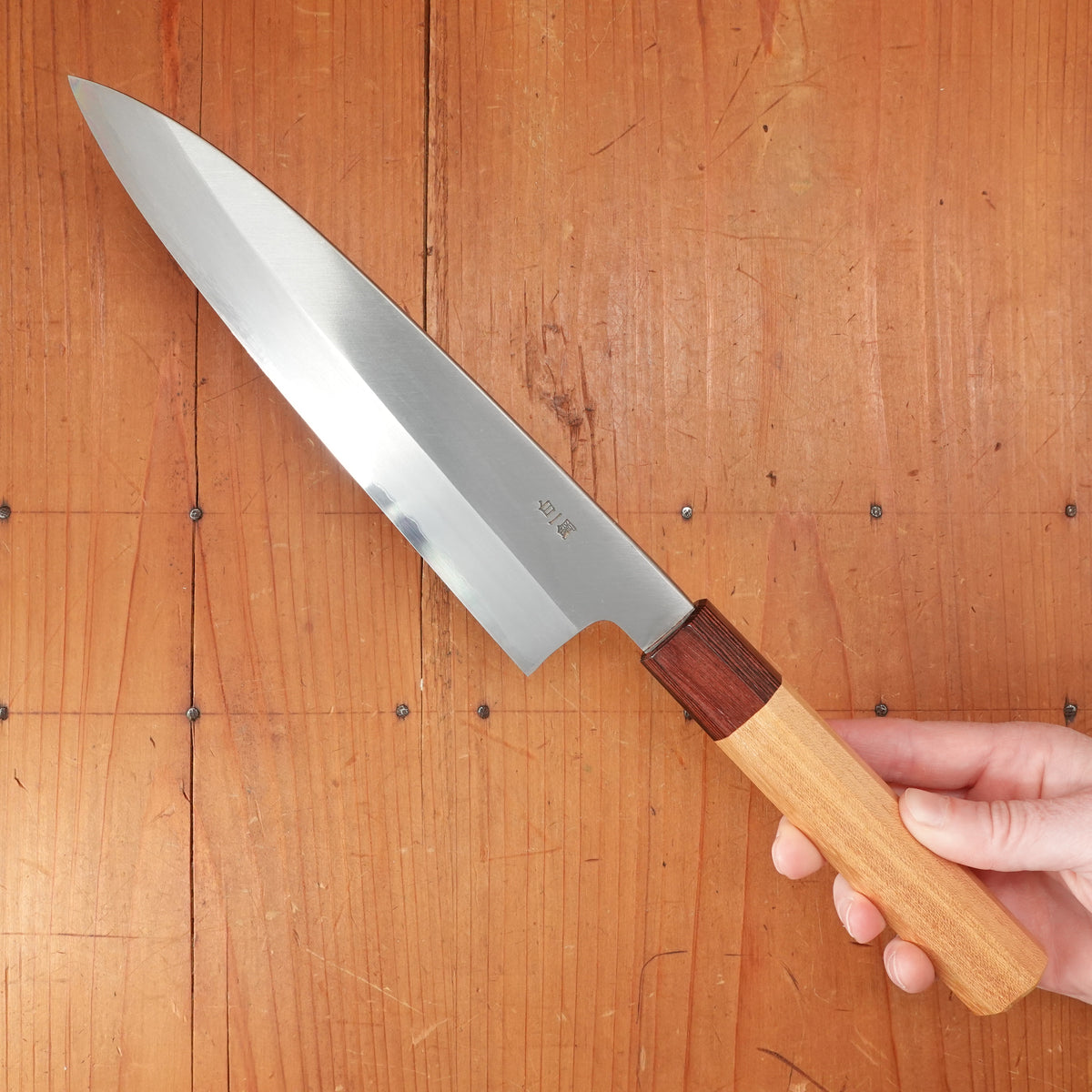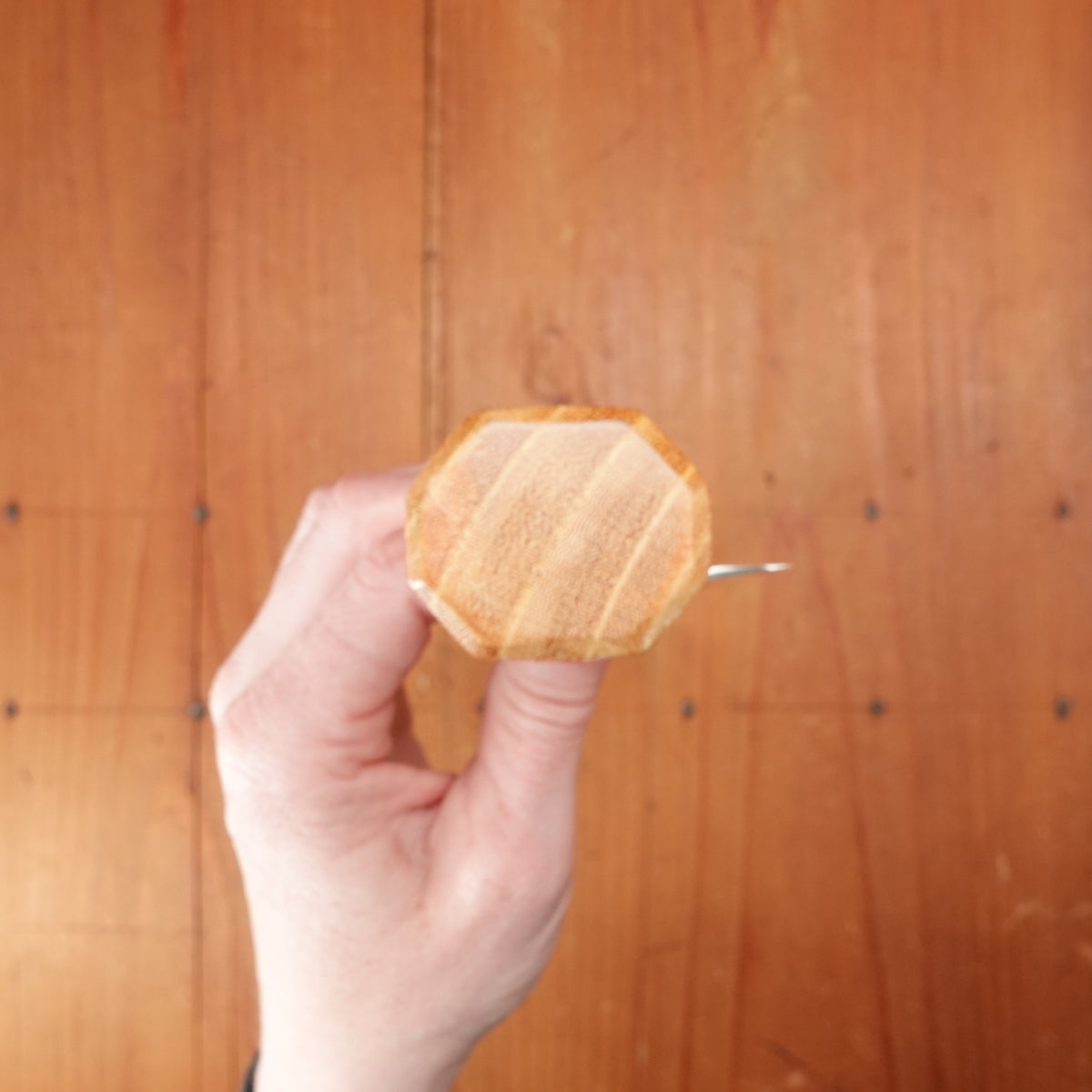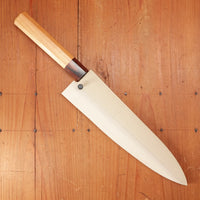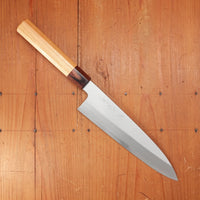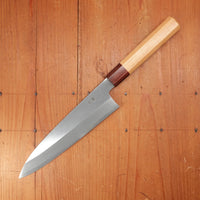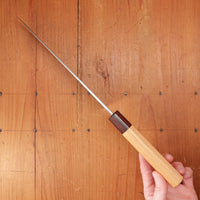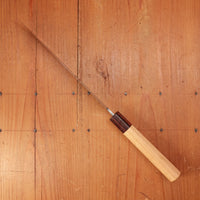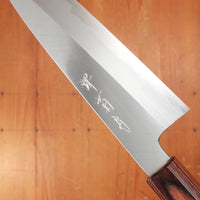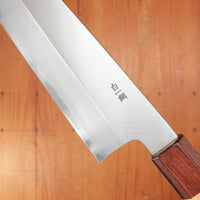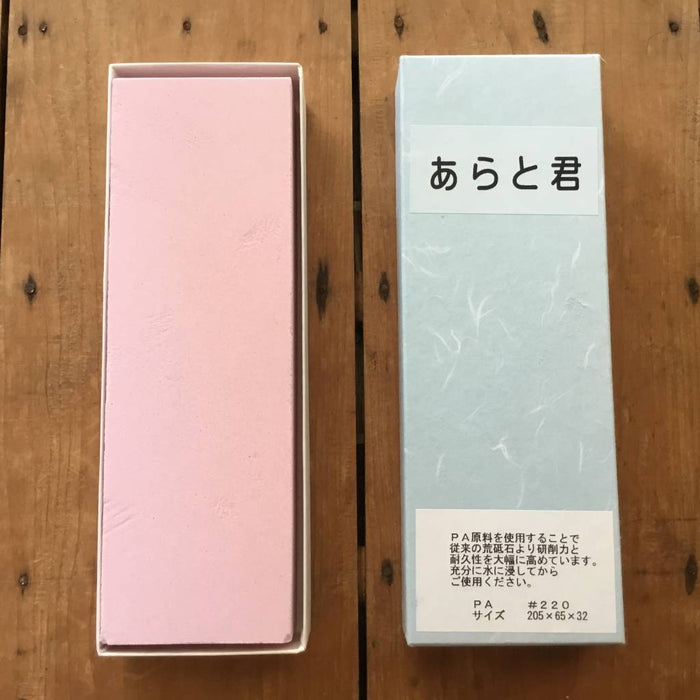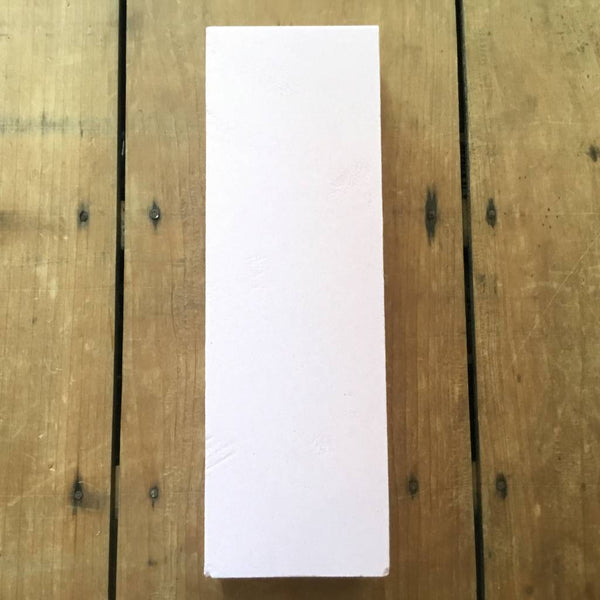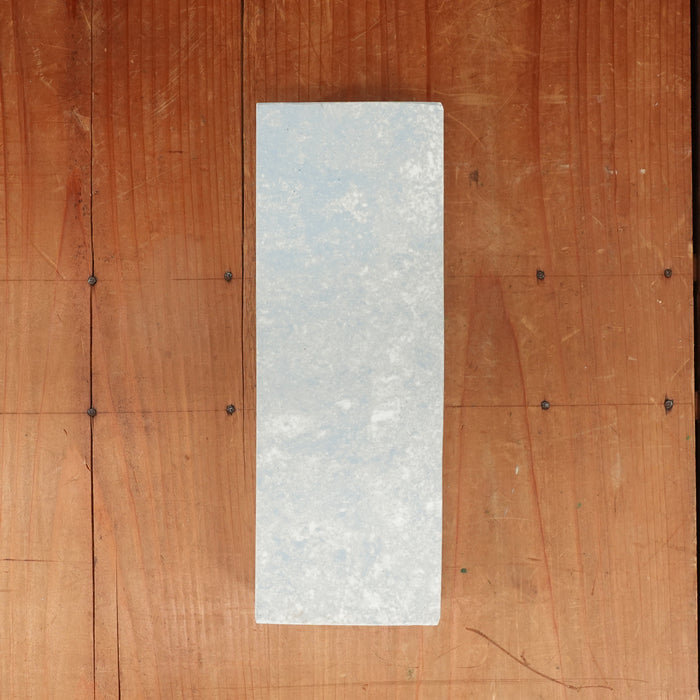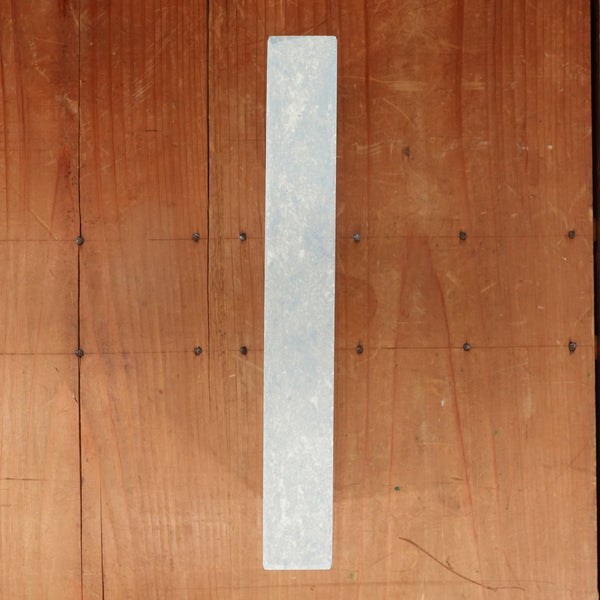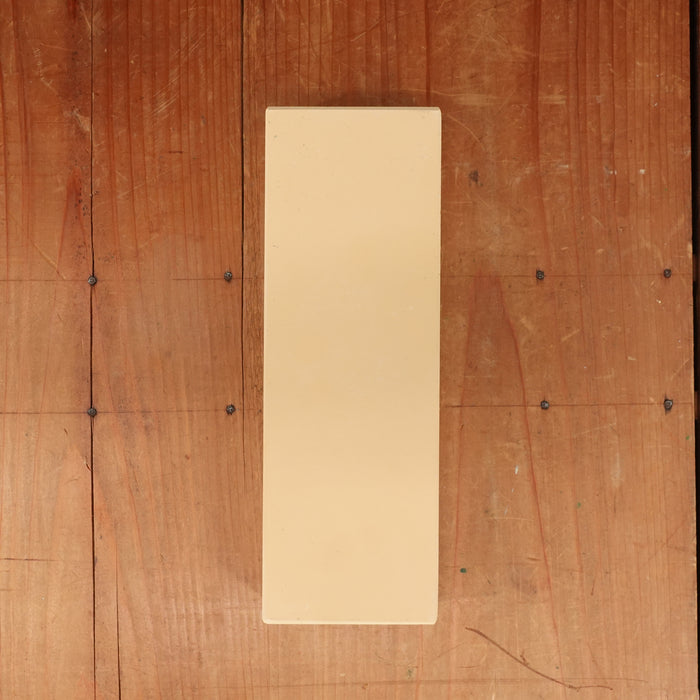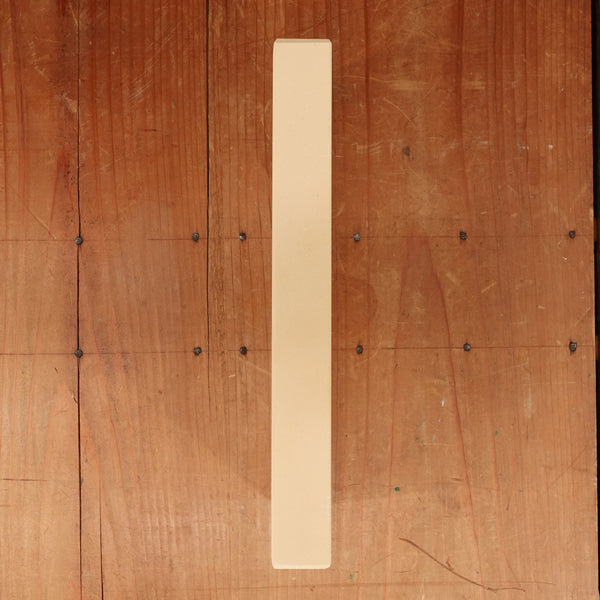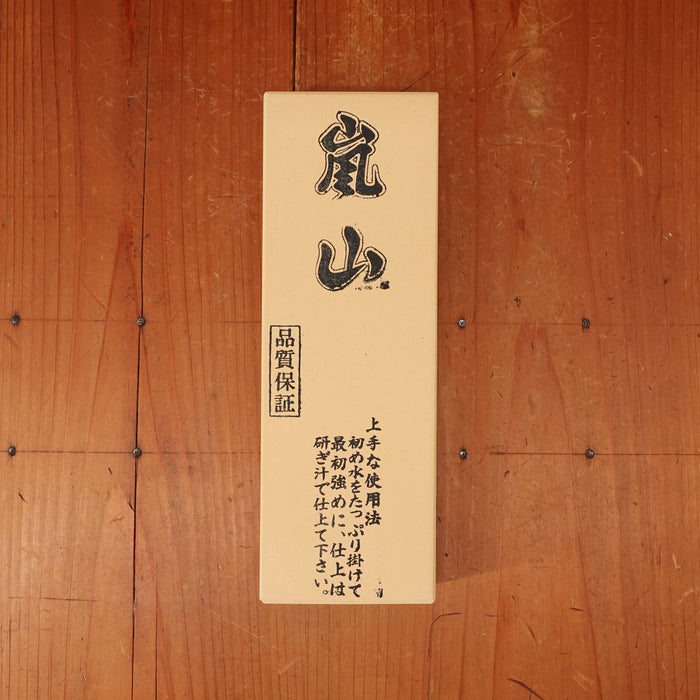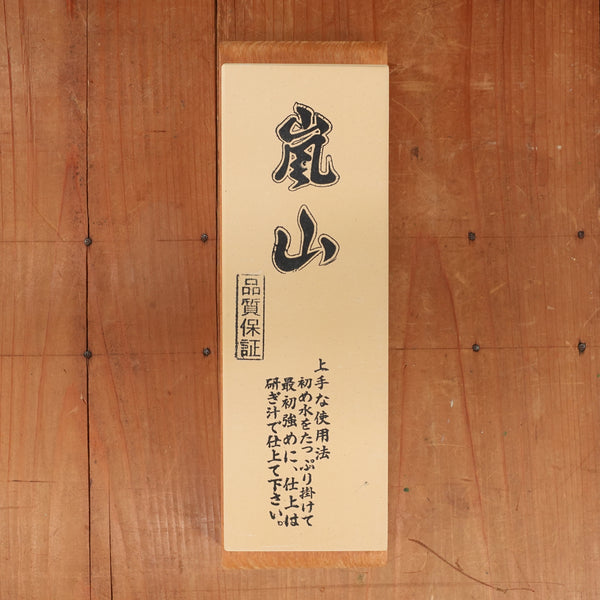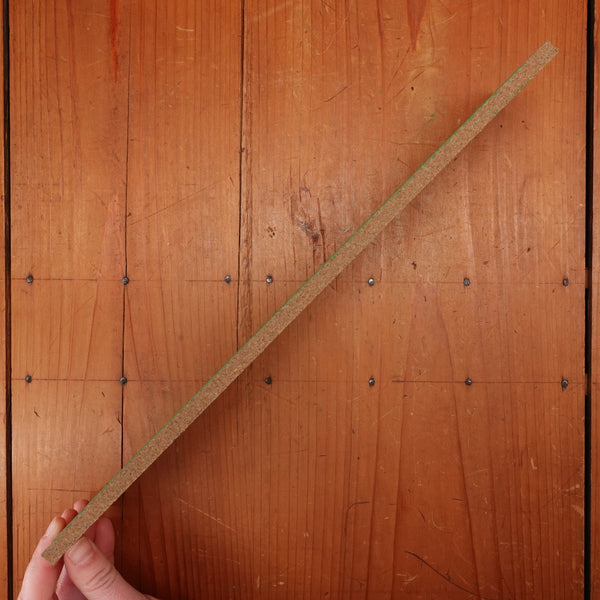Sakai Kikumori Nakagawa 210mm Gyuto Stainless Clad Shirogami 1 Keyaki with Saya
-
Regular Price
-
$385.00
-
Sale Price
-
$385.00
-
Regular Price
-
Sold Out
-
Unit Price
- per
- Regular Price
- $385.00
- Sale Price
- $385.00
- Regular Price
- Unit Price
- per
These hand forged knives are made with a stainless-clad shirogami 1 carbon steel core with a migaki finish. They're fitted with an octagonal keyaki (zelkova) handle and pakka wood ferrule. The dimensions and geometry of this knife were made to our specifications and are exclusive between Sakai Kikumori, Nakagawa Hamono and Bernal Cutlery.
This is an ideal work knife, highlighting some of the best forging out there with wide-beveled, migaki finish grinding done with superb geometry in mind.
Nakagawa-san's smithing is characterized by thorough heat treatment with excellent control during forging. The result are knives that have remarkable edge formation and edge retention while remaining tough. His carbon steels are easy to sharpen across most steel types.
Shirogami is rated 1-3; increasing in carbon content as the number gets smaller. Typically, shirogami 3 is tough with a shorter edge life than shirogami 2, and shirogami 1 has the best edge life with the least toughness. However, in the hands of Nakagawa-san, this shirogami 1 is given better toughness which offsets its more brittle nature. This is definitely a sharpener's steel that works well at a very fine finish. It is a real pleasure to sharpen Nakagawa-san's shirogami 1. It has a longer lived edge than his shirogami 2 and performs well at very fine finishes- it’s a true blank slate that’s great for a huge variety of finishing stones, especially natural stones.
Sakai Kikumori was started in 1926 and draws on Sakai's 600 year history as the major center of traditional Japanese cutlery manufacturing. They work with a large variety of Sakai's best smiths, sharpeners and small factories to offer a wide variety of knives ranging from traditional to modern.
These knives come from the maker with lacquer on the blade for corrosion protection during shipping. It can be removed using acetone or lacquer thinner (follow manufacturers instructions for use).
About This Knife



Listed Length: 210mm
Total Length: 347mm
Edge Length: 197mm
Heel Height: 47mm
Spine Thickness: 3.08mm
Weight:
Orientation: Ambidextrous
Blade Type: Stainless Clad Carbon Steel
Steel Type: Shirogami 1 (White Paper #1)
Steel Hardness (HRC): 63-64
Reactive: Partially
Handle Type: Japanese (wa)
Handle Material: Keyaki & Horn Ferrule
Dive Deeper
Medium-fine finish
Sharpening Supplies
Stones & Accessories selected specifically for this knife.
Arato-kun #220 Extra Coarse Grit Whetstone
- Regular Price
- $34.00
- Sale Price
- $34.00
- Regular Price
-
- Unit Price
- per
Bernal Cutlery Takarazukushi 1200 Grit Blue Marble Semi-Soft Ceramic Japanese Whetstone
- Regular Price
- $74.00
- Sale Price
- $74.00
- Regular Price
-
- Unit Price
- per
Bernal Cutlery Takarazukushi 4000 Grit Yellow Semi-Hard Resinoid Japanese Whetstone
- Regular Price
- $82.00
- Sale Price
- $82.00
- Regular Price
-
- Unit Price
- per
Arashiyama #6000 Whetstone Stone NO Wooden Base
- Regular Price
- $58.00
- Sale Price
- $58.00
- Regular Price
-
- Unit Price
- per
Arashiyama #6000 Whetstone With Nagura Stone and Wooden Base
- Regular Price
- $62.00
- Sale Price
- $62.00
- Regular Price
-
- Unit Price
- per
Bernal Cutlery Monodiachrome™ Precharged Deburring Strop
- Regular Price
- $40.00
- Sale Price
- $40.00
- Regular Price
-
- Unit Price
- per
